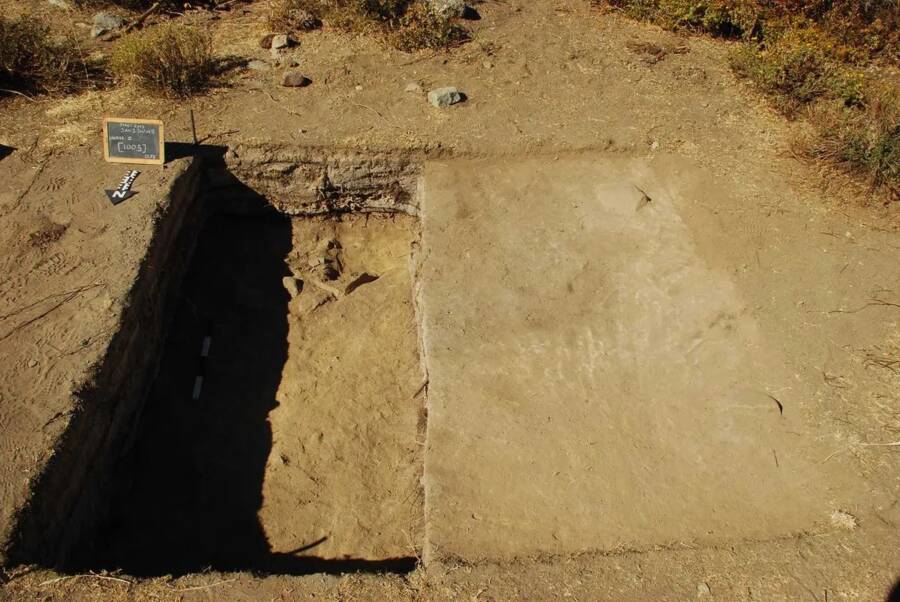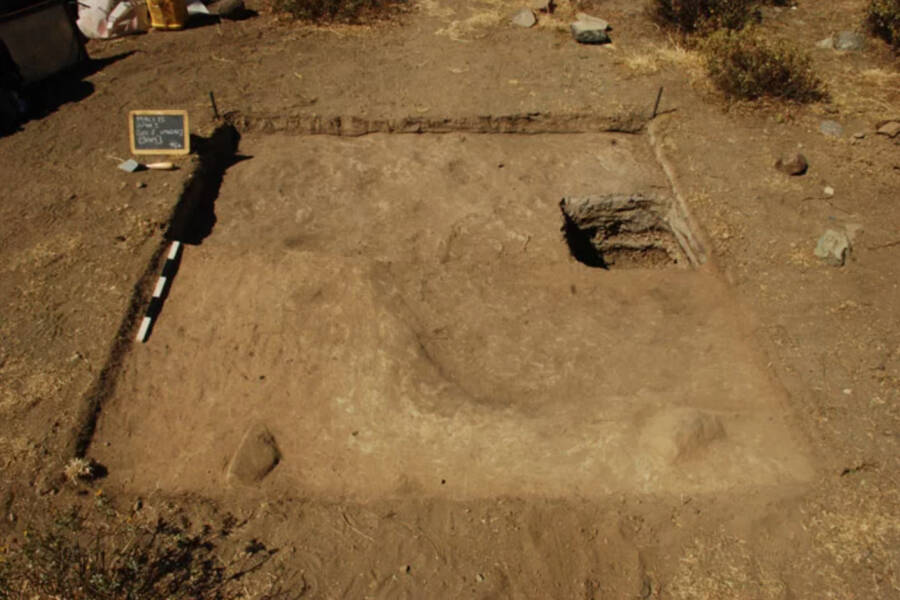Archaeologists believe that ritual dances performed here were meant to pay tribute to the weather gods of ancient Andean lore.

ORP-PIACI ProjectThe open-air platform at Viejo Sangayaico makes a deep percussive sound when stomped on.
Archaeologists in Peru have discovered an ancient “sounding” dance floor designed to create a drum-like sound when stomped on, possibly in honor of a thunder god.
The ancient dance floor was found at the Viejo Sangayaico site, roughly 125 miles southeast of Lima, and likely constructed some time between 1000 and 1400 C.E., according to a study recently published in the Journal of Anthropological Archaeology. The floor was still in use during Inca rule from 1400 to 1532, and it may have even been used during the early years of the Spanish conquest.
According to the sole author of the study, Kevin Lane, an archaeologist with the Instituto de las Culturas (IDECU) of the Universidad de Buenos Aires in Argentina, “we have here a specially prepared percussion surface, in essence a type of sprung or ‘sounding’ dance floor, composed of different types of soil, ash, and camelid guano to create a floor surface able to shock absorb… In effect, recreating a large drum on the ground surface.”
The unique design of this “sounding” platform alternates between four layers of camelid guano and four layers of clay, with the materials being strategically placed to create a percussive sound. The gaps within the guano layer create a deep, bass-like sound encircling the dance floor, which is roughly 33 feet in diameter.
Archaeologists said the Viejo Sangayaico dance floor was likely created to mimic the sound of thunder, as Andean cultures believed in various gods connected to lightning, rain, and thunder.
“I believe that these open platforms would have been used during the pre-Hispanic period as a stage on which to venerate the nearby mountain gods, in this case those of Huinchocruz,” Lane explained to The Art Newspaper.
The dance floor itself was built on top of an open-air platform, close to a second one, which may have once been the site of an Inca temple dedicated to the lightning deity. Lane suggested that the close association between lightning, rain, and thunder may have also played a part in the performance, with Andean wind instruments accompanying the large drum.

ORP-PIACI ProjectResearchers discovered the platform’s unique design accidentally when they noticed a hollow noise as they walked on it.
Dance was a major component of pre-Hispanic Andean rituals, Lane explained. Archaeologists believe the platform was constructed specifically to heighten and enhance the natural sounds associated with dance.
“We reckon the platform could have held up to 26 people dancing in unison, making for a loud thumping sound,” Lane said. He also noted that dust raised up as part of the dancing may have been a visual feature of the dance.
Given how pervasive dance-based rituals were in Andean societies, the discovery of this dance floor also raises the possibility that other Andean sites contain similar constructions.
“We already knew this from sites like Chavin, but even during the late pre-Hispanic period it is possible that many sites had sectors specially prepared for this,” Lane said. Researchers have also recently studied another site in Peru, Huánuco Pampa, for its use of sound.
In 2015, an acoustical field survey around the central platform of Huánuco Pampa revealed an advanced understanding of acoustics among the ancient Inca. Per a 2018 report, the survey showed that Huánuco Pampa’s central platform served as a multi-directional communication tool, allowing Inca elites to “observe and influence activities across the site.”
In essence, the Inca were particular about creating structures that carried sound far and wide. Sound was evidently an important part of the pre-Hispanic Andean culture, both in practical and ritualistic terms, and the findings at Huánuco Pampa and the Viejo Sangayaico site offer further insight into how these societies utilized sound in their daily lives.
“The sounding dance platform is a fantastic find and it shows that, aside from instruments, the human body and the landscape could be employed musically,” Lane said. “It also brings past sounds to life, especially given that the past is mostly silent and lost to us.”
After reading about the discovery of this ancient dance floor, read about when archaeologists found the dance floor where John the Baptist was sentenced to decapitation. Then, read about when the remains of Napoleon’s favorite generals were found underneath a Russian dance floor after 200 years.





